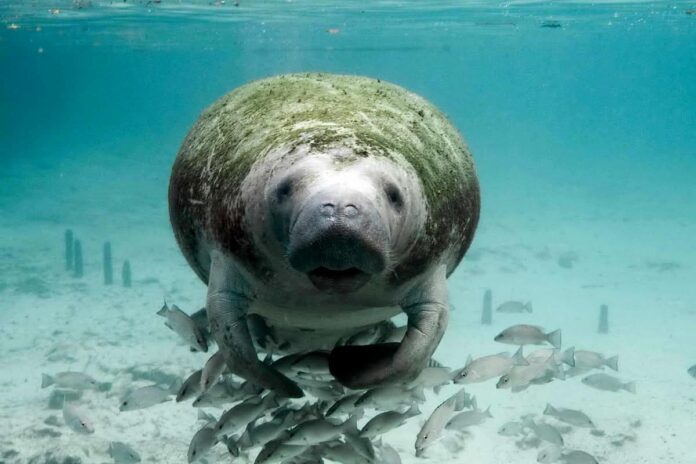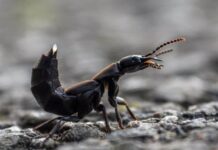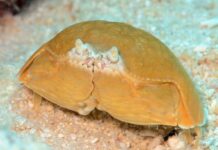Do you know that there are actually 3 manatee species nowadays? That’s right, they probably very similar to each other but they are from different areas and regions. We are going to find out more information about these large fully aquatic herbivores today. Let’s see if you are familiar with any of them, so check them out.
1Amazonian Manatee
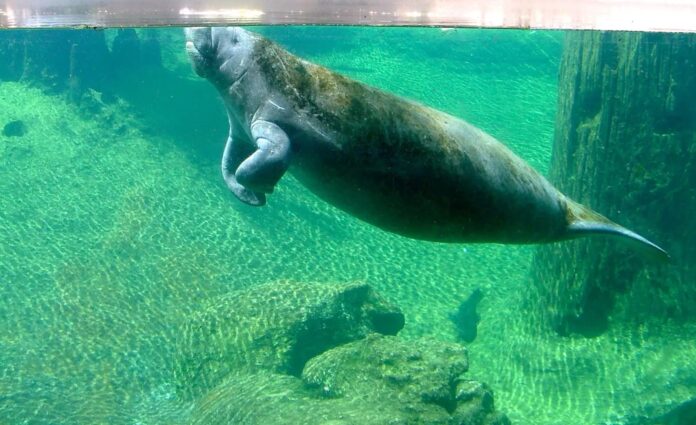
Scientific Name: Trichechus Inunguis
On average, an Amazonian manatee is from 76 centimeters to 2.6 meters, making it the smallest manatee species among the three. Amazonian manatees have large cylindrical body with flippers for forelimbs and a paddle for a tail. These flippers are useful for aiding motion when it swims, moving food into its mouth, and touching; pretty “handy”. They also use their flippers to embrace other manatees. The unique thing about the Amazonian manatees is that they lack nails on their flippers, which is different from the other two. It has smooth and rubbery brownish or gray skin with fine hairs scattered all over. One of the most interesting features about them is that they can move each side of their lips independently. Also, they have polyphyodont teeth, meaning their teeth are continuously replaced throughout their lives.
This manatee species lives in the Amazon Basin across Brazil, Colombia, Ecuador, and Peru. As a sirenians, these sea cows live exclusively in freshwater habitats where they hang out in flooded forests and meadows during the flood season. They spend their lives almost entirely underwater, and they can remain underwater for around 10 minutes. Not different from other manatees in the family, the Amazonian manatees also feed on aquatic plants. Some of the common ones are bladderworts, grasses, hornworts, water hyacinths, and water lilies.
Threats
The Amazonian manatees are facing population decline, making them a vulnerable species on the IUCN Red List. The main threat is illegal hunting for their high-value meat while their fat and skin are used for cooking and medicines. Along with that, calf mortality, climate change, and habitat loss also contribute to their population decline as well. Not to mention pollution by fertilizers, mercury from mining activities, and pesticides, things are pretty bad.
2West African Manatee
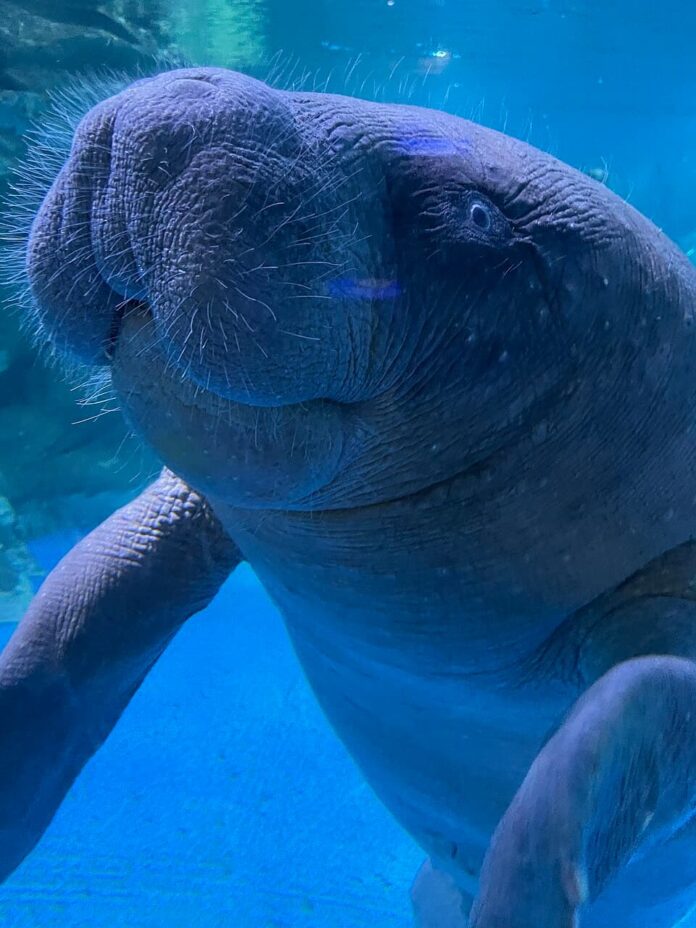
Scientific Name: Trichechus Senegalensis
West African manatees, aka African manatees, have a wide torso with a paddle-like tail. They are gray in color, and they have small colorless hair covering their bodies. It is not uncommon to see algae and other tiny organisms growing on their bodies, giving brown or greenish color. An African manatee can grow up to 3 meters long, and it has large forelimbs or flippers. Unlike the Amazonian manatees, their flippers have toenails, and they use those flippers to paddle or bring food to their mouth.
Just like the name suggests, West African manatees have a wide population in West African regions. This manatee species has the widest habitat range among other sirenian species out there. Their range is from offshore islands in the Atlantic all the way to equatorial rainforests, rivers in the Western Sahel, and more. They inhabit brackish and freshwater habitats such as bays on the coast, coastal estuaries, lagoons, lakes, oceans, reservoirs, and rivers. As omnivores, they usually feed on both floating and submerged aquatic vegetation, clams, fish, mangrove trees, and mollusks. They spend most of their time exploring their watery habitats, and coming across one is pretty rare. This is also why their information is not as broadly known as the other two species in the family.
Threats
Poachers target the African manatees because of their bones, meat, skin, and oil which are useful for various purposes. More than that, African manatees are sold to aquariums and zoos or online as pets in countries like Cameroon and Nigeria. On top of that, it is not unusual to see manatee meat being sold on the street and in marketplaces. Meanwhile, people in Chad and Mali believe that manatee oil can cure ailments like ear infections, rheumatism, and some skin conditions. Apart from these, factors like agricultural development, increased damming, and increased hydroelectric power use in the rivers also affect their population. Not to mention droughts and tidal changes that harm their habitats, they are considered Endangered and Vulnerable in various regions now.
3West Indian Manatee
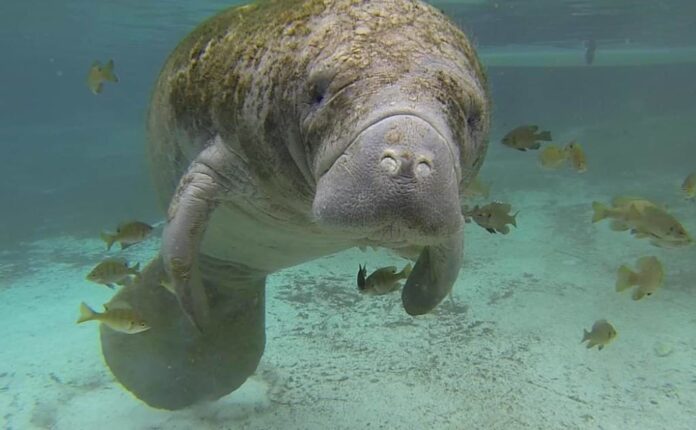
Scientific Name: Trichechus Manatus
Also goes by North American manatee, the West Indian manatee is a very well-known manatee species among the three. This one has two subspecies including the Antillean Manatee (in the Caribbean) and the Florida Manatee (in the United States). The West Indian manatees are the largest, reaching a length of 4.6 meters and 600 kilograms in weight. Appearance-wise, they do not look any different from their two other family members above. They have a large gray body with flippers and a spatula-like paddle that they use for swimming. The faces of these manatees are wrinkled, and they have whiskers on their faces. One different feature is that they have thick fur that sparsely covers the body to reduce algae or barnacle build-up on their skin.
West Indian manatees live solitary or in herds in warm coastal areas of the Caribbean. They inhabit shallow coastal areas like estuaries and rivers, and they can live in both freshwater and saltwater habitats. These large sea cows feed on various aquatic plants in their habitats, and eelgrass and seagrass are their primary meals. They also feed on algae, grasses, and leaves, and they can use their flippers to dig up the roots of these plants to eat. When they don’t eat, they simply cruise or swim at a steady pace in slow motion, just chilling. They can move their strong tails up and down while cruising, and their flippers help them steer. And in shallow water, they simply use their flippers to walk.
Threats
Unfortunately, both subspecies are facing various threats including habitat loss, human activities, and pollution that harm their population. The Antillean subspecies is considered endangered while the Florida subspecies is considered vulnerable on the IUCN Red List. Antillean manatees are threatened by habitat fragmentation and illegal hunting. Meanwhile, the Florida manatees are severely affected by collisions with watercraft. Entanglements and ingestion of debris, harmful algae blooms, high perinatal mortality, and the loss of warm water habitats also harm them. In Central and South American countries, people hunt West Indian manatees for their bones, hide, and meat.
Related Post: 2 Hippo Species

